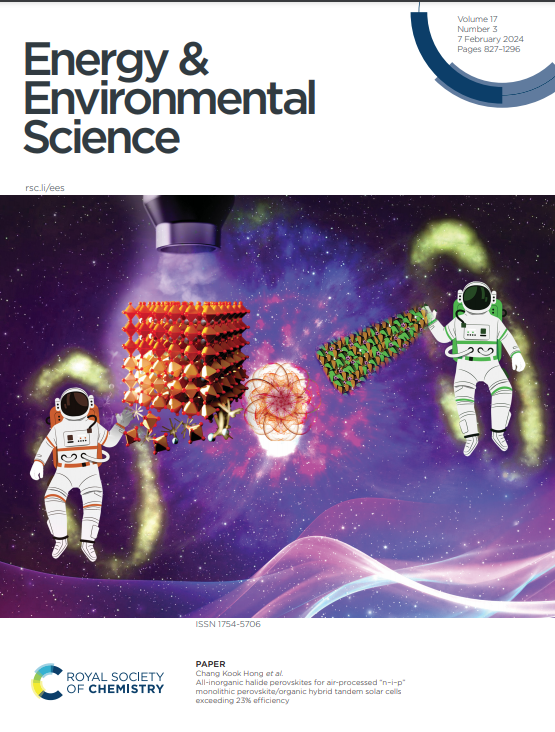Dual-Anion Ionic Liquid Electrolytes: A Strategy for Achieving High Stability and Conductivity in Lithium Metal Battery
IF 32.4
1区 材料科学
Q1 CHEMISTRY, MULTIDISCIPLINARY
引用次数: 0
Abstract
Ionic liquid electrolytes (ILEs) provide promising thermal and electrochemical stability characteristics for safer lithium metal batteries (LMBs). However, their development faces challenges due to their low ionic conductivity and poor wettability on separators. In this study, we introduce a dual-anion locally concentrated ionic-liquid electrolyte (D-LCILE), designed with a diluent and two distinct anions to significantly improve the ionic conductivity and wettability. These improvements were confirmed through electrochemical impedance spectroscopy (EIS) measurements on stainless steel symmetric cells, contact angle tests, and rate capability assessments on a 300 µm thick lithium metal half-cell. Notably, the dual-anion design enhances the interfacial stability, as density functional theory (DFT) calculations revealed a more stable solvation shell structure, further supported by molecular dynamics (MD) simulations. Additionally, scanning electron microscopy (SEM) experiments confirmed the deposition of a thin and, dense lithium layer, while X-ray photoelectron spectroscopy (XPS) depth profile analysis showed a stable solid electrolyte interphase (SEI) with increased LiF content. Performance tests on a 20 µm-thick Li||LiFePO4 full cell revealed an average Coulombic efficiency exceeding 99.90% and capacity retention >99.93% after 200 cycles at 1C, making D-LCILE a highly promising candidate for next-generation, high-performance LMBs.求助全文
约1分钟内获得全文
求助全文
来源期刊

Energy & Environmental Science
化学-工程:化工
CiteScore
50.50
自引率
2.20%
发文量
349
审稿时长
2.2 months
期刊介绍:
Energy & Environmental Science, a peer-reviewed scientific journal, publishes original research and review articles covering interdisciplinary topics in the (bio)chemical and (bio)physical sciences, as well as chemical engineering disciplines. Published monthly by the Royal Society of Chemistry (RSC), a not-for-profit publisher, Energy & Environmental Science is recognized as a leading journal. It boasts an impressive impact factor of 8.500 as of 2009, ranking 8th among 140 journals in the category "Chemistry, Multidisciplinary," second among 71 journals in "Energy & Fuels," second among 128 journals in "Engineering, Chemical," and first among 181 scientific journals in "Environmental Sciences."
Energy & Environmental Science publishes various types of articles, including Research Papers (original scientific work), Review Articles, Perspectives, and Minireviews (feature review-type articles of broad interest), Communications (original scientific work of an urgent nature), Opinions (personal, often speculative viewpoints or hypotheses on current topics), and Analysis Articles (in-depth examination of energy-related issues).
 求助内容:
求助内容: 应助结果提醒方式:
应助结果提醒方式:


